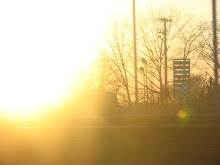



Limbourg Brothers, Les Tres Riches Heures of Jean Duc de Berry 1411-1416
Switching gears and going back a couple of centuries in another art history class, all about landscapes, it is increasingly apparent to me that landscapes have a lot more history and language behind them than I thought could be apparent. The material and world of landscape is fairly dry in this early time period, because it was believed at this time that landscape represented paganism. Nature was understood to be sinful and was mistrusted as something beyond what was known, and thus a danger to societal standards.
These illustrations are actually part of a calendar book that shows the allegorical calendar, zodiac calendar, and other indications of time of year. An artist was hired by Jean Duc de Berry (probably a duke) to illustrate what his peasants should be doing during any phase of the year. The seasons were illustrated, showing when to harvest, how the land will should be treated, daylight availability, etc. In this regard, the artist is not really portraying a landscape for any other purpose than functionality, unless you consider how egotistical the duke himself was, by carrying around a little book of how important he is for having so much land and so many silly peasants running around to tame it.

The peasants are actually very clearly degraded in the illustrations; depicted as dumb and class-less. In the winter scene, the shack the peasants live in is cut in half to give a clear view to the ladies warming themselves by the fire. While doing so, the ladies lift their skirts and are depicted as being so oblivious that they disregard the fact that they are revealing their genitals to not only each other but the viewer. This was added to humor the duke, and ultimately degrade the peasants.
Why I like this:
Well, first of all, isn't it kind of pagan to put the zodiac in a calendar?
The irony!
Hypocritically, considering I called the duke egotistical for having one, I would actually totally adore a little book like this. Of course, it wouldn't be for my peasants, but it might be for what kind of ingredients are freshest during the seasons, or what kind of color palette best describes a certain phase of the year. The idea of representing the seasons is all over the place in the art world, yet the idea of creating such a finely detailed work of art that is so tiny it could fit in the palm of your hand makes it quite precious.
List of What to Extract from this:
-work mini, mini book or mini series, themed chronologically, perhaps abstract representation of seasons
-fine details
-use of zodiac as time frame, dome shape at top creates interesting view
-the s shape composition of the winter scene

No comments:
Post a Comment